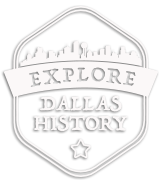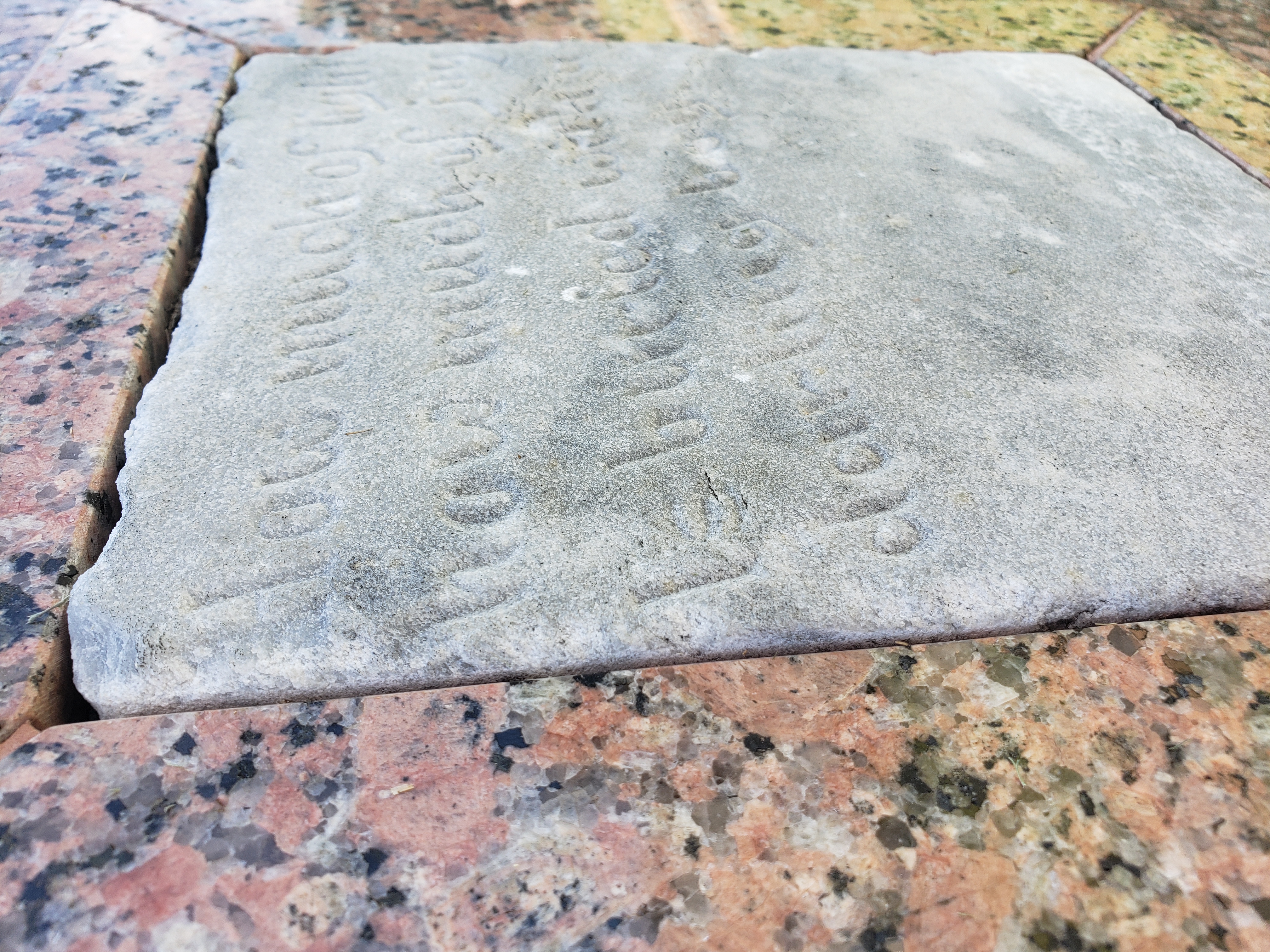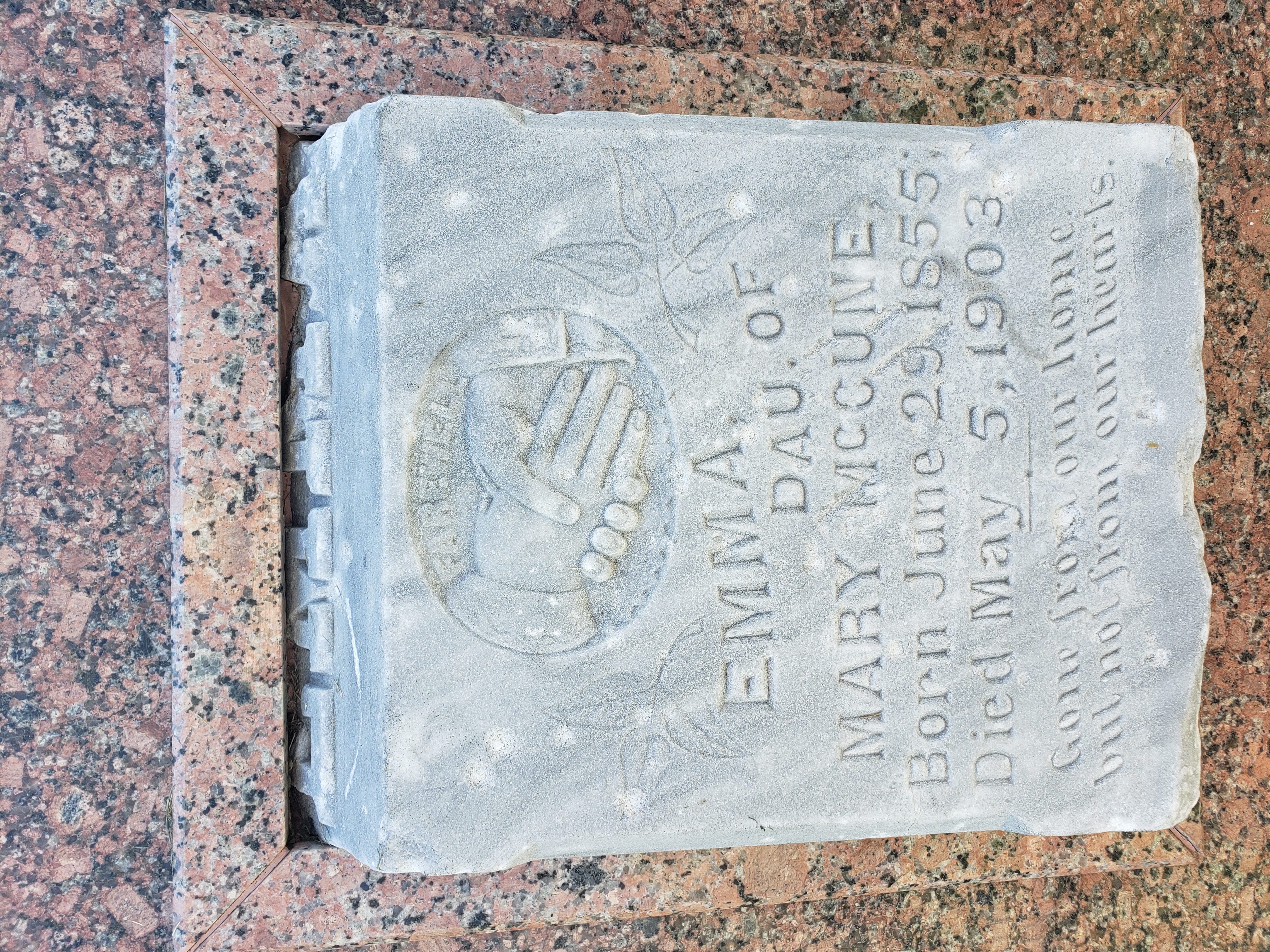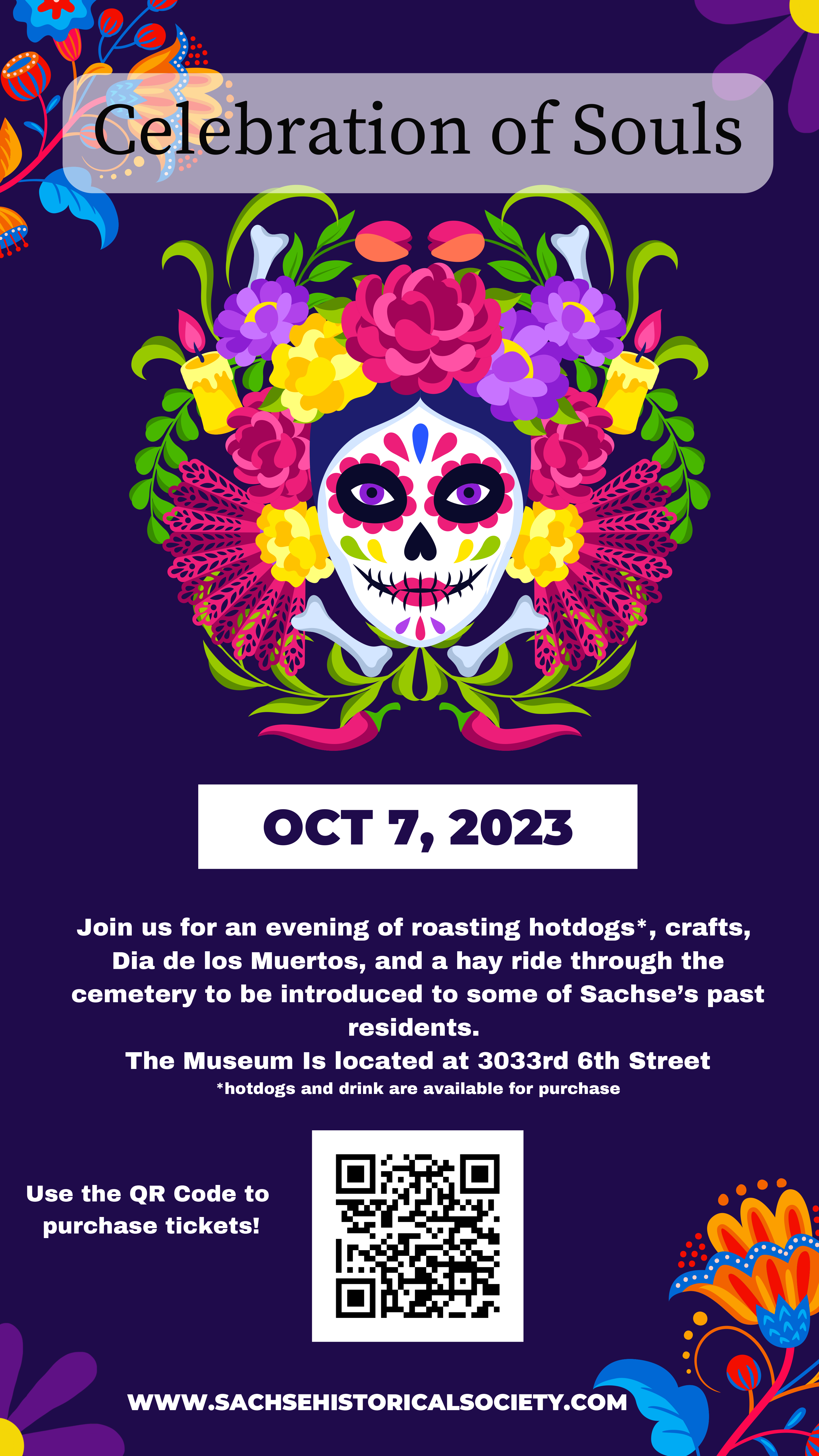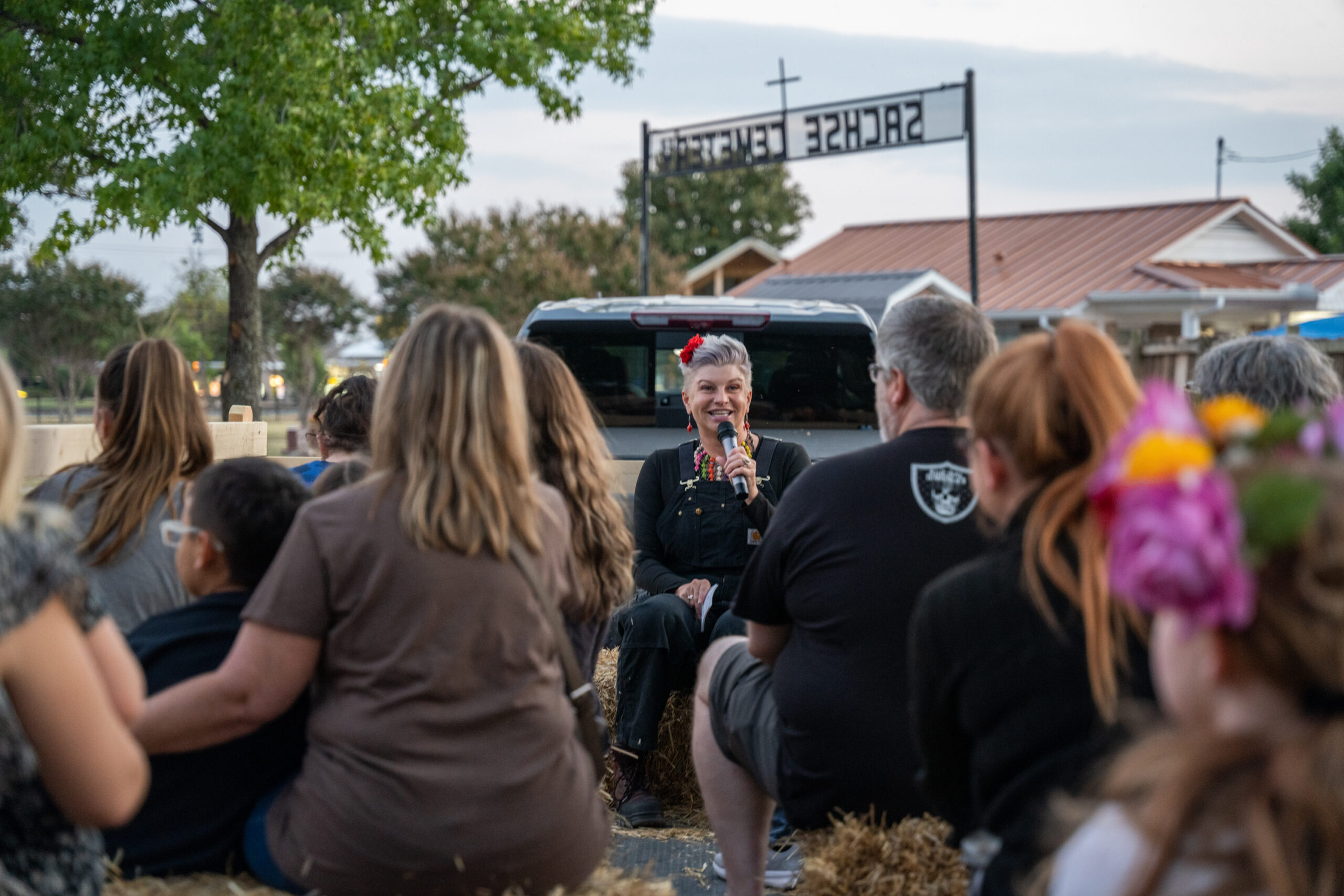After a brief Aunt Jemima/Nancy Green detour, we are back to the Freedman’s Cemetery in Dallas. In my first post, I mentioned that there are only two headstones left in the entire cemetery. The reason is two-fold: 1) most burials were originally marked by impermanent objects such as wooden crosses or personal objects; 2) railroads and highways have unapologetically destroyed what was the original cemetery, resulting in ‘lost’ burials. One of the two lone original headstones was preserved simply because it was at the extreme edge of what is left of the cemetery, hidden in brush.
These two lone headstones have been incorporated in to the design of the modern memorial. The first is for a child, a boy, but no name is visible. The headstones are sunk in to the memorial, so they can only be seen from a single side. The name may exist on the back or even a side.
How much of light
How much of joy
Is buried with a
darling boy
(This is normally “with our” rather than “with a”)
The second headstone is in much better shape and is quite detailed. “EMMA” can be made out on the very top even though it is counter-sunk in to the memorial. The facing side states:
Emma, daughter of Mary McCune
Born, June 29, 1855
Died, May 5, 1903
Gone from our home, but not our hearts
Leaves decorate the area above her name as does an oval with two shaking hands and the world “farewell”. This is unusual for a woman buried without a partner. If you look closely, the hands are meant to indicate male and female. The ‘female’ hand on our left has a dainty cuff while the ‘male’ hand has a buttoned, heavier cuff. This symbolism is normally used on the headstones of man and wife, indicating that they will be reunited in the afterlife. I also think it is interesting that her mother is mentioned, even though Emma is nearly 60 years old. It could be that Mary, the mother, was still alive.
The photographs are mine, but I used information from two articles.
SMU’s Daily Campus: https://www.smudailycampus.com/news/freedmans-cemetery-has-a-history-as-complicated-as-its-buried-members
Africa Diaspora Archaeology Newsletter: https://scholarworks.umass.edu/cgi/viewcontent.cgi?article=1666&context=adan
